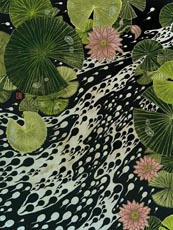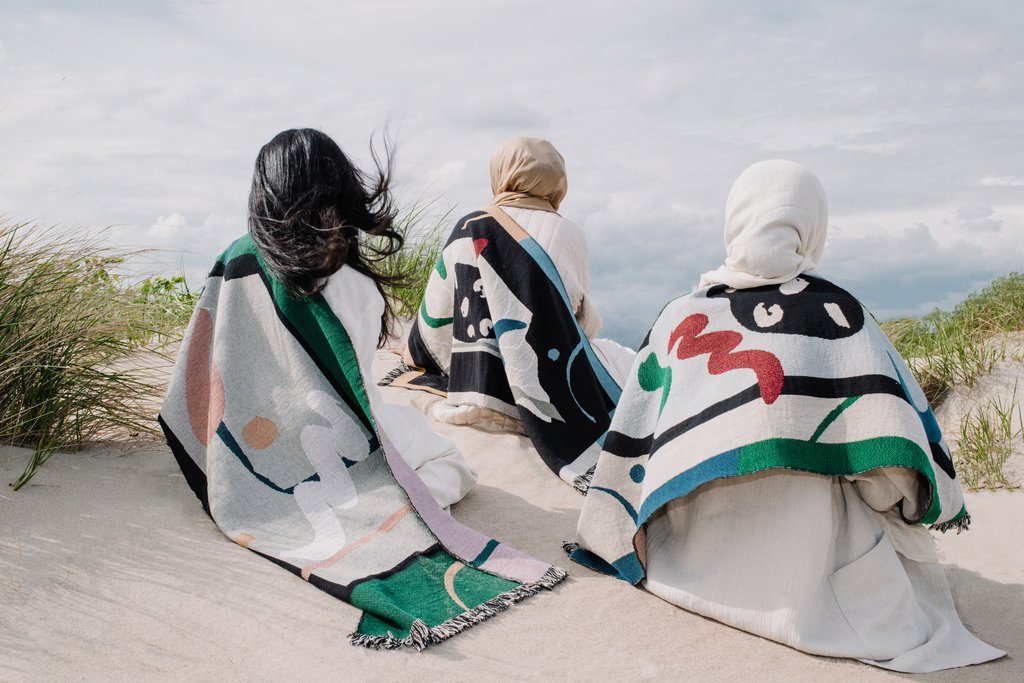Studio Visit: Ceramicist Yuko Nishikawa
Combining ceramics and light design, artworks that are both delicate and occupying

Inside Japan-born Yuko Nishikawa‘s industrial Brooklyn, New York studio, which she’s aptly named “Forest,” there are hundreds of ceramic pieces in varying stages. Some, which are nearly complete, rest on a long wooden table made from scrap materials from other studios within the building. Others, which are set to be fired, painted, tossed or archived, sit on shelves and hang.
She moved to the US as a teenager—first to Philadelphia and then to New York when she was 18 years old. After studying Design at New York’s Fashion Institute of Technology, Nishikawa found positions at a few of the interior design industry’s most recognized studios: Clodagh, Bilhuber, Alexandra Champalimaud and then Donghia—ultimately winning two Interior Design Magazine “Best of” Awards during her decade-long stint at the latter. It was while designing furniture and lighting for the company, that she picked up ceramics as a hobby.
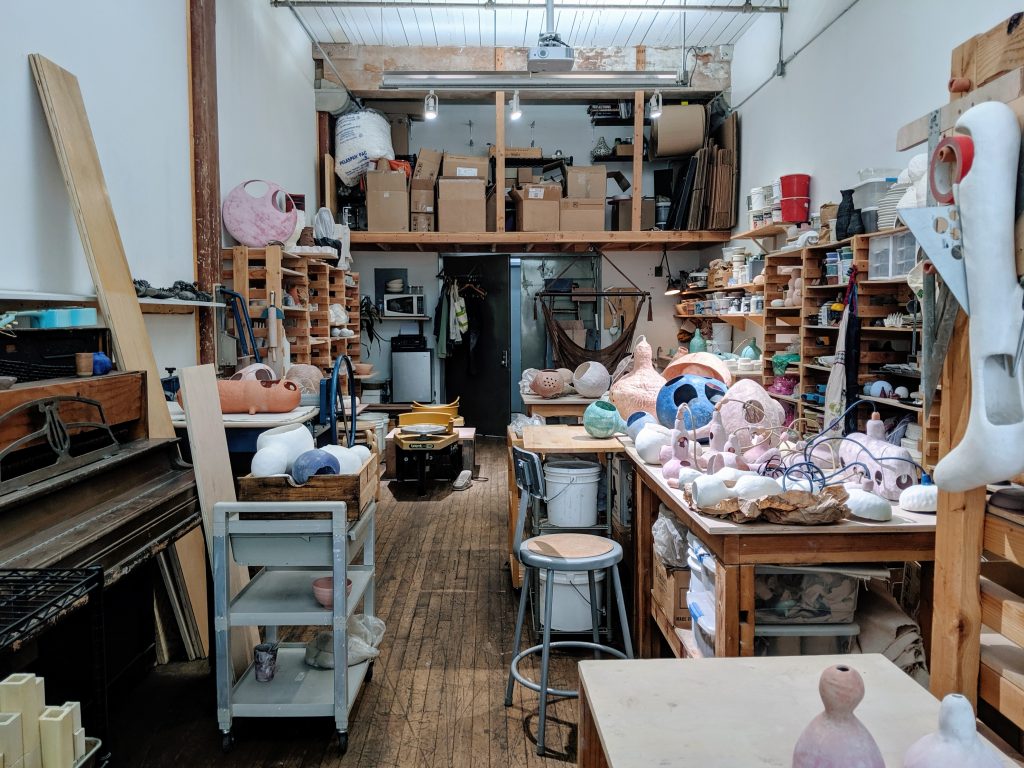
“I started doing ceramic for my own fun, a fun project. In the beginning, I just wanted to throw, to be able to throw. I was making functional pieces, some mugs and things like that. Then I became more interested in lighting. Why don’t I combine this?” she says. These pieces were a stark contrast from the style she’d concentrated on previously and she enjoyed the escape. Then, when she had work commissioned by Anthropologie and Calvin Klein Home, she decided to establish her own ceramics and lighting company in 2018.
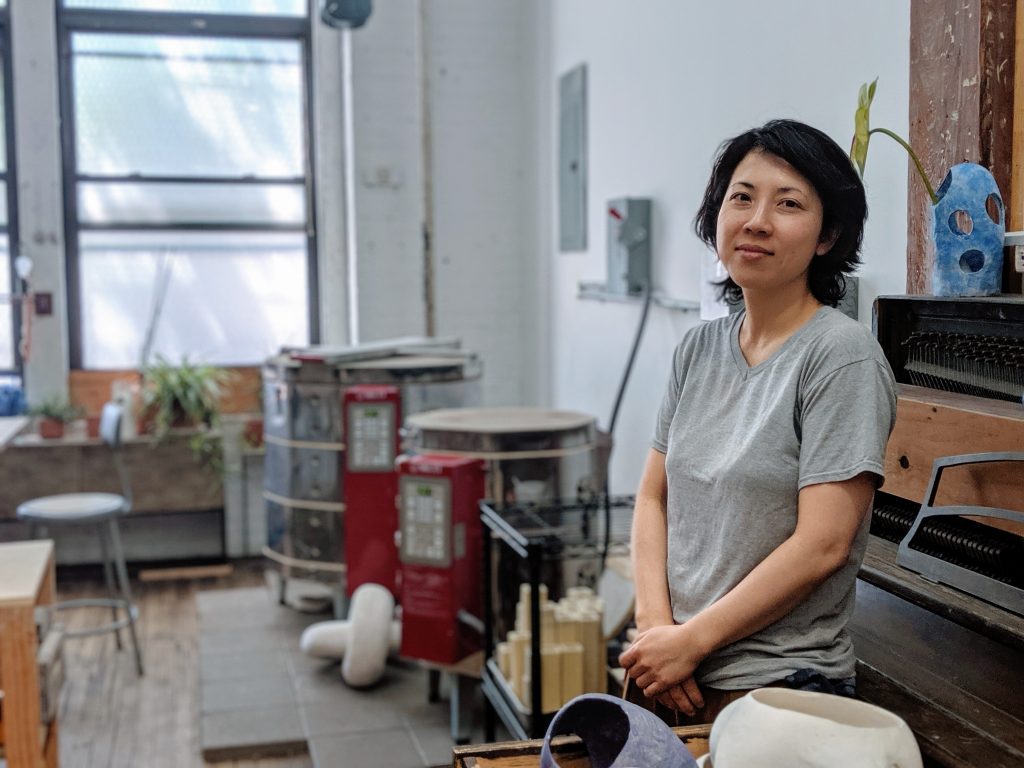
“Before I started making lighting, I was making more sculpture work. I was interested in just amorphic shapes, which kind of feels alive—feels like its growing and I think that the sculptural forms and lighting combined somehow,” she explains. “Because I was working as a designer for a high-end residential company, it’s all really clean lines—really highly formatted. So I guess, because of that, I wanted to do the opposite. I wanted to make something that I cannot put on the blueprints in a way.”
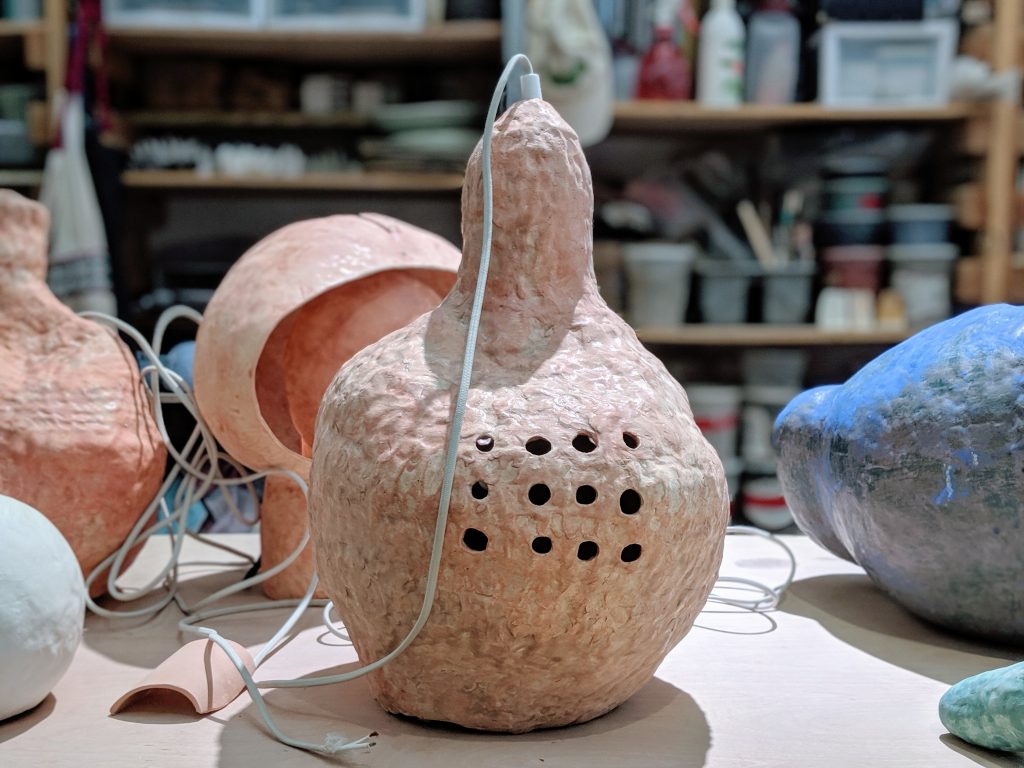
As the two mediums melded together, her work assumed a unique style: ornate, dangling ceramic pieces form delicate chandeliers. In literal terms, the work is primarily ceramic-centric. Each piece is handmade by Nikishawa in her studio. Her work begins with tiny doodles, sketches, words and even colors and only ends once the piece has been installed (a process done by her, too). The way it occupies the space, illuminates the room and retains a light are equally as important—some pieces may be glazed one color, but they adopt another shade or color when lit.

“I think I like forms,” she says. “I do lots and lots of sketches—or like scribbles. Lots of words. But it doesn’t mean I have to follow the sketch. I just have to do it so I can move on, to get it out. And then I get rid of many of the sketches. I don’t keep them.”
With her guidance, each piece assumes its own shape. Some may be slender and elongated while others bellow out into bell-shaped limbs. She always imagines them together, she explains—even when she’s only begun on the first one.
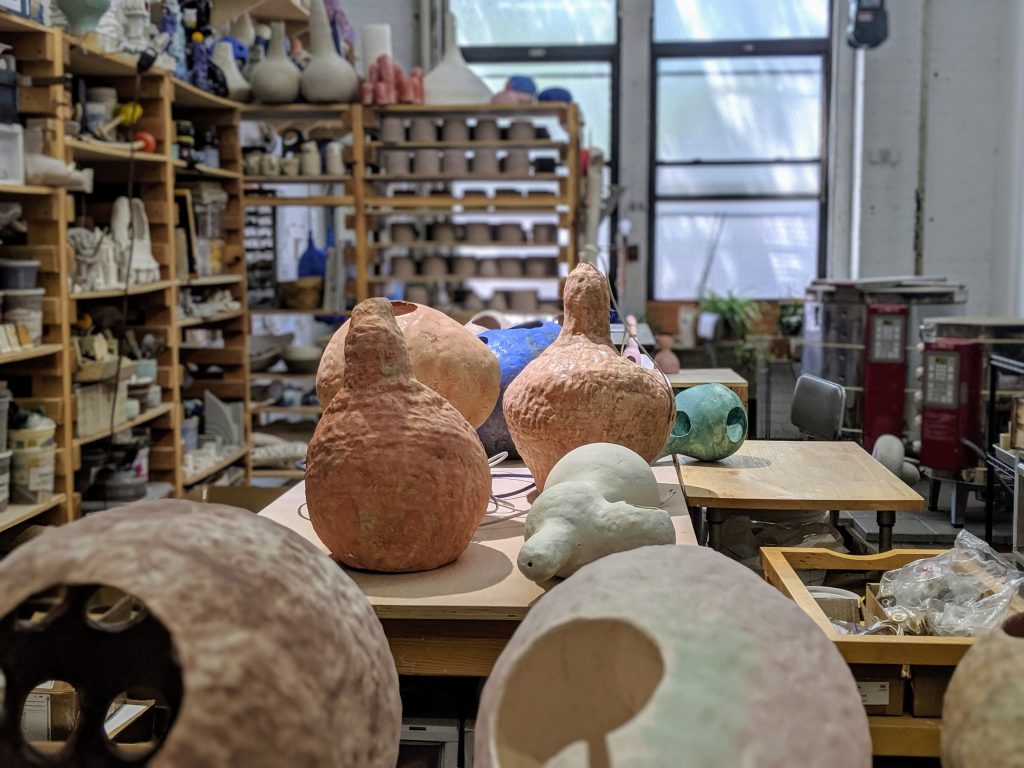
She sets out to let the clay, and her inspiration, manifest naturally. There are obvious constraints, though, given that the shape ultimately has to accommodate electrical components and hang alongside other pieces. “When I’m making things, I don’t think it looks fragile or delicate,” she says. “But then, when I see them hung, it’s like, ‘Oh wow, they’re much lighter than I thought they were.'”

Inside her studio, alongside the hundreds of iterations she’s crafted—she mentions that her preferred escape from commissioned work is building upon existing pieces: “It’s the extension of things I made before. It’s, ‘I made this, but what if I tried this? Or tried this,’ right?” she says. There are also paintings, sculpted mugs, bowls and legs, and countless drawings that go beyond her scribbled sketches.
“There is no reason for it to be like that. It doesn’t do anything. And then sometimes a useless thing is so fun,” she laughs. Her work beyond ceramics is regimented but occupies equal attention. Triangle-patterned paintings adorn the wall above a piano. A pencil drawing of long, piano key-like blocks hangs on the wall behind her newest chandeliers, an Indigo blue set titled Courtship Behavior.
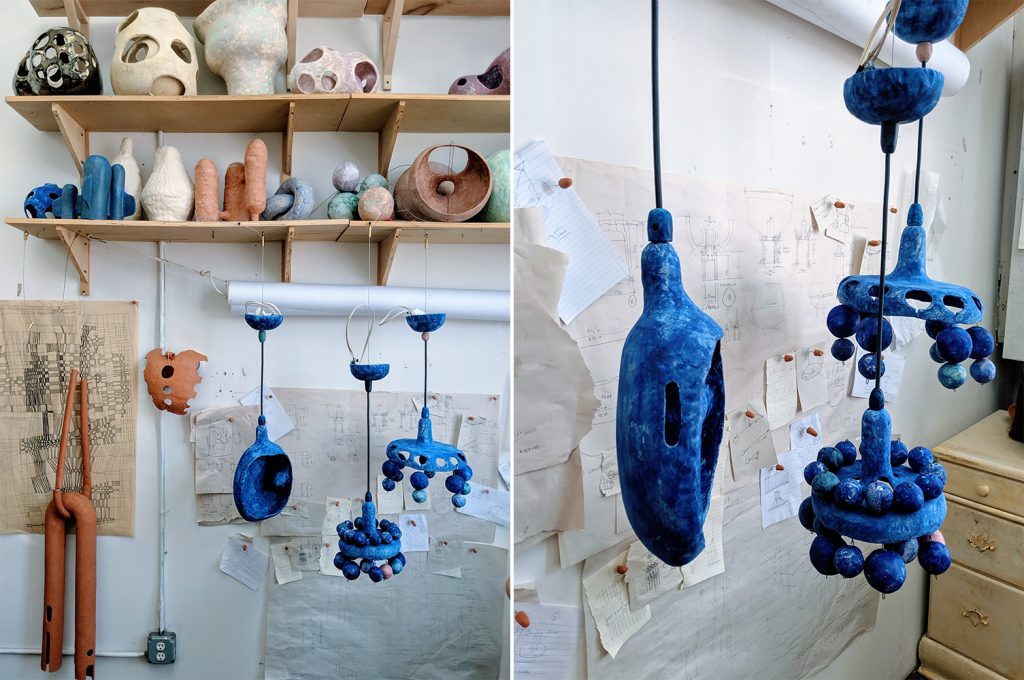
Nishikawa admits that this other work is part of her greater dream, which is to have a multi-purpose space. “I want that to be like a coffee shop or something like that—which people can use, not like a showroom. [Showrooms are] dead to me; it makes me feel sad.”
Her studio is a step toward this goal. This includes monthly meet-ups she hosts with the other artists in her shared space and guests from all mediums: scientists, poets, pianists and more. “They come here to share their work,” she says. In many ways, one can imagine the inspiration and ideation that abounds here is an equal draw for these guests, not just the opportunity to present or perform. “There are many different ideas,” she concludes. “Coming up with the idea is the easy part. But then actually doing it, or picking one, is hard for me.”
Nishikawa’s next solo show Nap opens 14 June at Sculpture Space NYC in Long Island City.
Images by Evan Malachosky
